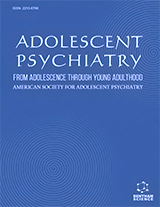Abstract
Background: Myths about vampires have been part of the culture in Western society since ancient times. In recent years, there has been a recrudescence of interest in vampires among teenagers, who have embraced books, movies and television programs on this subject.
Method: This article will explore the history and origins of the vampire myth and through a psychoanalytic and psychodynamic perspective, will analyze the life and work of Bram Stocker, the author of the ever-popular novel Dracula. It will also analyze the many modern variations on the vampire metaphor and explain how the developmental struggles of adolescence can be easily displaced on to the figure of the vampire. It will present case material to illustrate the meaning of this myth to adolescents.
Conclusions: The myth of the vampire can become a useful therapeutic tool to understand and explore adolescent conflicts so that clinicians can potentially help their adolescent patients overcome resistance and explore issues that are often located outside of their conscious awareness.
Keywords: Myths, Dracula, vampires, psychodynamic, adolescents, fiction, psychological development.
Adolescent Psychiatry
Title:Vampires and Vamps: The Use of a Popular Metaphor in the Psychodynamic Understanding of Adolescent Conflict
Volume: 3 Issue: 3
Author(s): Eugenio M. Rothe
Affiliation:
Keywords: Myths, Dracula, vampires, psychodynamic, adolescents, fiction, psychological development.
Abstract: Background: Myths about vampires have been part of the culture in Western society since ancient times. In recent years, there has been a recrudescence of interest in vampires among teenagers, who have embraced books, movies and television programs on this subject.
Method: This article will explore the history and origins of the vampire myth and through a psychoanalytic and psychodynamic perspective, will analyze the life and work of Bram Stocker, the author of the ever-popular novel Dracula. It will also analyze the many modern variations on the vampire metaphor and explain how the developmental struggles of adolescence can be easily displaced on to the figure of the vampire. It will present case material to illustrate the meaning of this myth to adolescents.
Conclusions: The myth of the vampire can become a useful therapeutic tool to understand and explore adolescent conflicts so that clinicians can potentially help their adolescent patients overcome resistance and explore issues that are often located outside of their conscious awareness.
Export Options
About this article
Cite this article as:
Rothe M. Eugenio, Vampires and Vamps: The Use of a Popular Metaphor in the Psychodynamic Understanding of Adolescent Conflict, Adolescent Psychiatry 2013; 3 (3) . https://dx.doi.org/10.2174/2210676611303030007
| DOI https://dx.doi.org/10.2174/2210676611303030007 |
Print ISSN 2210-6766 |
| Publisher Name Bentham Science Publisher |
Online ISSN 2210-6774 |
 15
15
- Author Guidelines
- Bentham Author Support Services (BASS)
- Graphical Abstracts
- Fabricating and Stating False Information
- Research Misconduct
- Post Publication Discussions and Corrections
- Publishing Ethics and Rectitude
- Increase Visibility of Your Article
- Archiving Policies
- Peer Review Workflow
- Order Your Article Before Print
- Promote Your Article
- Manuscript Transfer Facility
- Editorial Policies
- Allegations from Whistleblowers
- Announcements
Related Articles
-
Vitamins B1, B2, B3 and B9 – Occurrence, Biosynthesis Pathways and Functions in Human Nutrition
Mini-Reviews in Medicinal Chemistry Melatonin Metabolism in the Central Nervous System
Current Neuropharmacology Filtering Disturbances in Schizophrenic Patients. Gating of Auditory Evoked Potentials and Prepulse Inhibition of the Acoustic Startle Response Compared. Emphasis on the Role of Dopamine
Current Neuropharmacology A Critical Review of the Antipsychotic Effects of Cannabidiol: 30 Years of a Translational Investigation
Current Pharmaceutical Design The Stress Rheostat: An Interplay Between the Unfolded Protein Response (UPR) and Autophagy in Neurodegeneration
Current Molecular Medicine Causal Mechanisms Underlying Periventricular Leukomalacia and Cerebral Palsy
Current Pediatric Reviews Tackling Chronic Pain and Inflammation through the Purinergic System
Current Medicinal Chemistry Neuregulin Signaling in Pieces-Evolution of the Gene Family
Current Pharmaceutical Design An Update on Adenosine A2A Receptors as Drug Target in Parkinson's Disease
CNS & Neurological Disorders - Drug Targets Adenosine, Ketogenic Diet and Epilepsy: The Emerging Therapeutic Relationship Between Metabolism and Brain Activity
Current Neuropharmacology 5'-Nucleotidases, Nucleosides and their Distribution in the Brain: Pathological and Therapeutic Implications
Current Medicinal Chemistry Non-Analgesic Effects of Opioids: Opioid-induced Respiratory Depression
Current Pharmaceutical Design Antidepressant Brain Stimulation Techniques
Current Psychiatry Reviews Differentiating the Dementias. Revisiting Synucleinopathies and Tauopathies
Current Alzheimer Research Neuropathological Correlates of Falling in the CC75C Population-Based Sample of the Older Old
Current Alzheimer Research 3-Methyl-6-(prop-1-en-2-yl)cyclohex-3-ene-1,2-diol: the Importance of Functional Groups for Antiparkinsonian Activity
Medicinal Chemistry Neurovascular Signals Suggest a Propagation Mechanism for Endogenous Stem Cell Activation Along Blood Vessels
CNS & Neurological Disorders - Drug Targets Prevention of Intracerebral Haemorrhage
Current Drug Targets Cognitive Dysfunction in Depression: Lessons Learned from Animal Models
CNS & Neurological Disorders - Drug Targets The Genetics of Small-Vessel Disease
Current Medicinal Chemistry


























